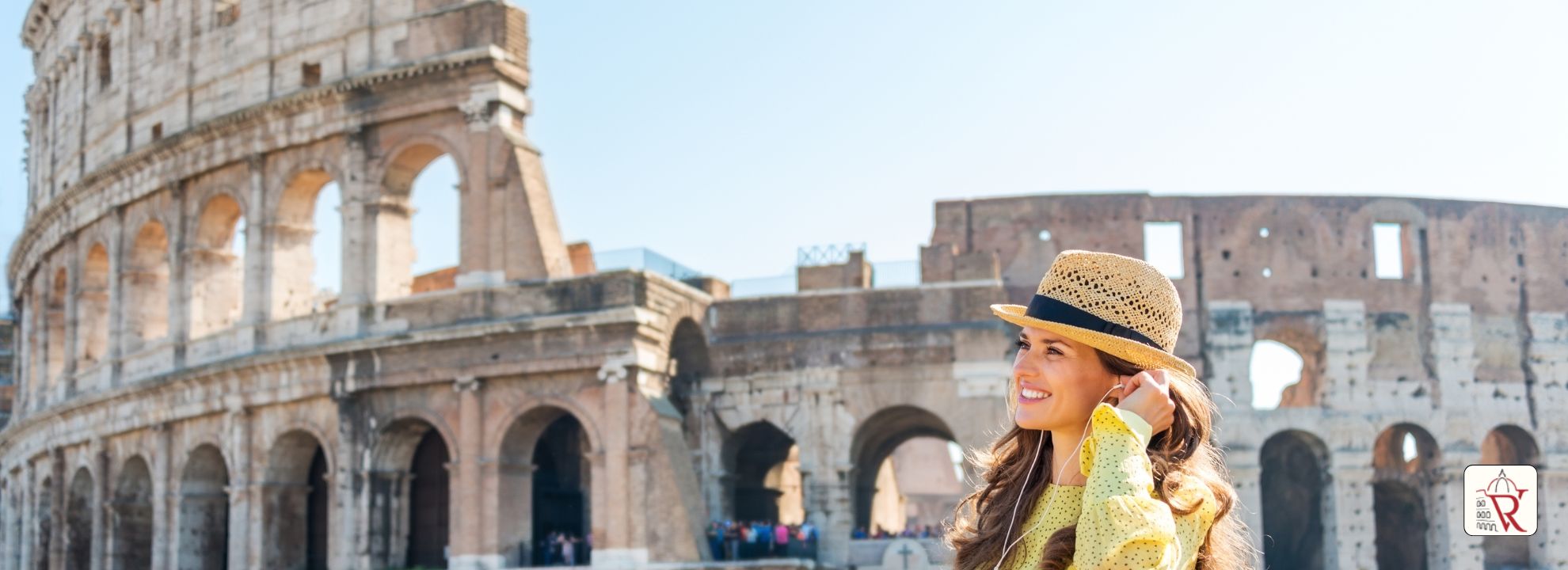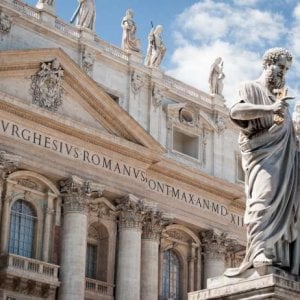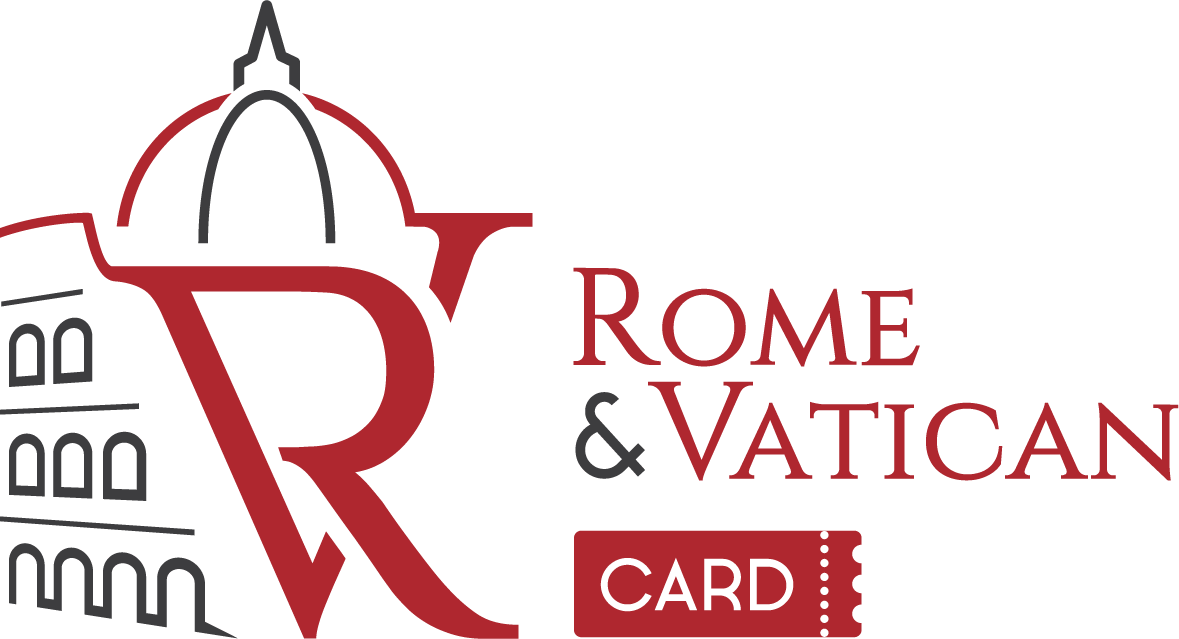Guided tour of the Colosseum: is it really worth it?
- 11 min read
If you’re planning a trip to Rome, one question is bound to come up: Is a guided tour of the Colosseum really worth it? Why a guided tour of the Colosseum is the best way to visit? In this travel guide, you’ll discover why booking a guided tour of the Colosseum is the smartest and most enriching way to explore the iconic amphitheater and its vast archaeological surroundings. We’ll break down what’s included, what you’ll see, and why going with a guide makes all the difference.


Vatican Museums + Sistine Chapel + St John and St Peter's Basilica | Guided Tour
How the Colosseum is Structured — and Why a Guide Makes It Better
Many travelers ask: Do I really need a guide to visit the Colosseum? Once you understand how complex the site is — both in size and symbolism — the answer is clear.
Everyone knows the Colosseum as the gladiators’ arena. However, a guided tour of the Colosseum reveals much more: from its underground chambers to panoramic viewpoints, from ancient logistics to imperial propaganda. You’re not just walking through ruins — you’re stepping into the world of Ancient Rome.
A guided tour of the Colosseum doesn’t just show you stones. It gives you a narrative. It helps you decode what you’re looking at. Without it, you’re wandering ruins. With it, you’re walking through history.
The Colosseum has 3 main levels that you can visit
- The Arena Floor, partially reconstructed, where you’ll stand right in the heart of the action. From here, you’ll grasp the scale and brutality of the games.
- The Underground (Hypogeum), a dark, fascinating world of tunnels and cages where animals and fighters were prepped for combat. This level is only accessible via guided tours.
- The Upper Belvedere Levels, from which the entire Roman Forum and Palatine Hill unfold like a map. It’s a viewpoint few get to experience, and one of the most rewarding parts of the tour.
The Archaeological Area of the Colosseum includes:
- Colosseum and its 3 levels
Roman Forum and Imperial Forums: a sprawling complex of temples, basilicas, arches, and open plazas that formed the civic and political heart of ancient Rome. - Palatine Hill: wooded and elevated, home to imperial palaces and where mythic Rome began—now offering perspectives over the Forum and amphitheater.
Size and historical significance of the Colosseum
The Colosseum itself measures approximately 189 m by 156 m and once held up to 50,000 spectators. Built in the 1st century AD by Emperors Vespasian and Titus, it’s a marvel of engineering and societal spectacle. The surrounding archaeological complex adds even more layers of importance — political, religious, architectural — to the visitor experience.
Together, the amphitheater plus Forum and Palatine span several hectares, with layers of history built into every stone. It’s vast — and easy to get disoriented without guidance.

Vatican Museums + Sistine Chapel + St John and St Peter's Basilica | Guided Tour
Why a guided tour of the Colosseum makes strategic sense
Because the site is so large, self‑guided visitors may feel rushed or lost. With a guided tour of the Colosseum, you enjoy unlimited time inside the amphitheater — descending through all three levels — and then, once the formal tour ends, you are free to wander the Roman Forum and Palatine at your own pace.
Importantly, standard online tickets do not allow you to access all three levels and the entire archaeological zone in one go. Only the guided tour of the Colosseum provides that seamless combination — three levels plus full access to the archaeological area — making it the smarter choice for comprehensive exploration.
What to Expect on a Guided Tour of the Colosseum: The Forum and Palatine Hill Matter Too
When you book a guided tour of the Colosseum, you often gain access to the full archaeological zone: the Roman Forum and Palatine Hill. And this is where a guide becomes even more essential.
The Forum isn’t a single building — it’s a maze of temples, arches, and ruins that once formed the beating heart of the Roman Empire. With a guide, the scattered stones become stories. You’ll stand at the Curia where senators debated, pass under the Arch of Titus, and learn how the Temple of Saturn once guarded the empire’s vast treasury.
Then there’s the Palatine Hill: quieter, greener, and steeped in legend. This is where Rome began, where Romulus is said to have founded the city, and where emperors built their palaces. A guide helps you see not just ruins, but the power structures, daily life, and political intrigues that once animated these walls.
Without a guide, it can feel overwhelming. With one, the experience flows naturally, like a well-told story unfolding across space.

Vatican Museums + Sistine Chapel + St John and St Peter's Basilica | Guided Tour
Five reasons why a guided tour of the Colosseum enhances your visit
1. You Make the Most of Limited Travel Time
Whether you’re in Rome for two days or two weeks, a guided tour of the Colosseum is one of the most time-efficient and enriching ways to connect with the city’s past.
2. You Get Access to Areas Others Don’t
Only guided tours offer access to the hypogeum, arena floor, and upper levels. If you want the full experience, this is the only way.
3. You Save Time and Stress
No need to worry about buying tickets, waiting in lines, or figuring out where to go. Your guide handles everything—from fast-track entry to navigating the site.
4. You Get Real Insight, Not Just Photos
A guided tour isn’t just information — it’s storytelling. Good guides tailor their tour to the group, answer questions, and bring ancient Rome to life in a way no audio guide or plaque ever could.
5. You Avoid Getting Lost or Missing Key Sights
The Colosseum complex is vast and layered. A guide ensures you see the most important features and understand what you’re looking at, instead of just wandering aimlessly.
What you will explore (and understand) on a guided tour of the Colosseum
The Outer Façade: Reading the Monument Before You Enter
A guided tour of the Colosseum often begins just outside the monument, where the first surprises are not within, but on its very skin. The façade is more than a backdrop — it’s a palimpsest of time. With the help of a guide, visitors start to notice the subtle shifts in stone color that speak of fires and restorations, the scars left by medieval quarrying, and the gaps where iron clamps were stolen centuries ago. Even before stepping inside, you learn that the Colosseum has served many roles: arena, fortress, ruin, and resource. It hasn’t merely survived history — it has absorbed and reflected it.
The Entrance Arches: Ancient Crowd Engineering
Crossing the threshold through one of the original entrances, you begin to grasp the brilliance of Roman engineering. The numbered arches weren’t just structural — they were logistical tools, part of a sophisticated system designed to usher in over 50,000 spectators and clear them out again in record time. During a guided tour of the Colosseum, this part of the visit becomes a lesson in urban planning and social order. You’ll come to understand how the flow of bodies, the placement of seating, and even the symbolism of the entrance design mirrored the hierarchical structure of Roman society. What seems like a passageway becomes a political diagram etched in stone.
The Arena Floor: Center of Spectacle
Stepping onto the arena floor is a dramatic moment — one of those rare experiences where imagination and architecture collide. Standing there, you no longer see the Colosseum from the outside in; you feel it from the inside out. This was the stage of life and death, where gladiators once stood beneath the gaze of emperors and roaring crowds. The space has been partially reconstructed, just enough to give you a visceral sense of its original scale. A guided tour of the Colosseum transforms this space from a myth into a setting grounded in ritual, choreography, and spectacle. From here, you also access the emperor’s box — a private loggia with a commanding view, symbolic of absolute control and divine right. Your guide might describe the rituals that preceded each game, the signals that triggered combat, and the subtle cues of power hidden in the architectural design.
The Hypogeum: The Hidden Machine Below
Descending into the hypogeum is like entering the backstage of history. This underground labyrinth, inaccessible without a guided tour, once buzzed with activity hidden from public view. It was here that animals paced in cages, slaves hauled pulleys, and gladiators waited in the dark for their turn under the sun. In this space, the Colosseum reveals itself not as a static ruin but as a living machine, capable of surprise entrances, theatrical effects, and deadly efficiency. The guide narrates the complex choreography that made this possible — the trapdoors, lifts, tunnels — and you begin to understand the games as both brutality and performance, scripted to impress and to control.
The Belvedere Levels: Panoramas and Perspective
Climbing to the upper levels offers a shift not just in altitude, but in perspective. The noise of the arena gives way to silence and space. From the Belvedere levels, you don’t just look down into the Colosseum — you look outward, across the Roman Forum, the Palatine Hill, and the sprawl of modern Rome. A guided tour of the Colosseum helps frame this view historically, pointing out how the positioning of monuments reflected Roman ideals of order, dominance, and eternity. From up here, the amphitheater itself seems more monumental, more connected to the city and its symbolism. It’s also a moment of reflection, where architecture, landscape, and history align.
Small Details That Reveal Big Stories
Throughout the tour, your guide draws attention to details that most visitors would overlook. A barely legible Latin inscription here, a faded fresco fragment there — each one a clue to the real people who once inhabited or passed through this place. The names of senators carved into seats, the patches of once-colorful plaster, the scratch marks left by tools: these fragments tell a story of usage, adaptation, and memory. In this way, a guided tour of the Colosseum doesn’t just offer a sequence of facts, but an unfolding narrative that links structure to story, grandeur to intimacy.

Vatican Museums + Sistine Chapel + St John and St Peter's Basilica | Guided Tour
Visiting Roman Forum and Palatine Hill with a guided tour
A guided tour of the Colosseum often opens the door to much more than the arena itself. Just beyond its walls, the Roman Forum and Palatine Hill reveal the full scale of Ancient Rome’s legacy. With a guide, these sites transform from scattered ruins into a coherent journey through power, religion, and daily life.
In the Roman Forum, you walk through what was once the beating heart of the city. Your guide brings structure to the chaos—explaining how temples, arches, and basilicas formed the backdrop of Roman law, politics, and ceremony. Here, every column has a voice, and every stone holds a story.
Up on the Palatine Hill, the experience turns more intimate. The ruins of imperial palaces rise above the city, overlooking the Forum below. This is where Rome was founded, and where emperors shaped it from above. Your guide connects the myths of Romulus with the realities of imperial rule, revealing how space and power worked together.
A Colosseum guided tour that includes the Forum and Palatine offers more than access—it offers context. Through your guide’s narrative, three separate sites become one continuous experience, allowing you not just to see Rome, but to understand its soul.

Vatican Museums + Sistine Chapel + St John and St Peter's Basilica | Guided Tour
Conclusion: Why you should choose a guided tour of the Colosseum
Opting for a guided tour of the Colosseum transforms your visit from a quick photo stop into an immersive journey through Roman history. You’ll gain exclusive access, expert insights, and a deeper appreciation for one of the world’s greatest archaeological complexes. It’s not just a tour — it’s a way to truly understand Ancient Rome.
Want to dive even deeper before or after your guided tour of the Colosseum?
Check out these must-read articles:
- The Complete Guide to the Colosseum — everything you need to know before you go
- 12 Smart (and Surprising) Tips About the Colosseum — clever hacks and facts most visitors miss
- 10 Colosseum Facts That Will Blow Your Mind — from secret tunnels to ancient tech

